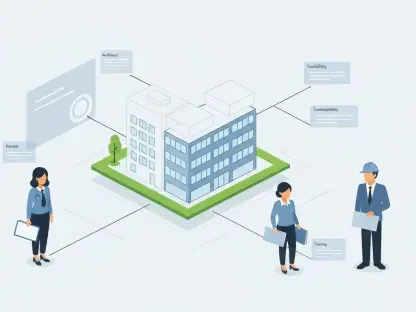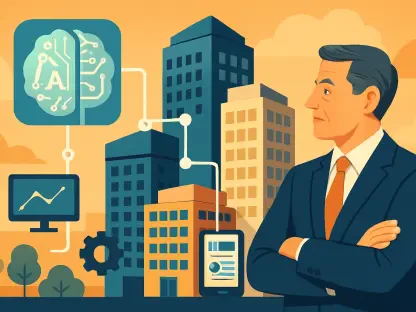In a world increasingly battered by the relentless force of natural disasters, imagine a technology capable of protecting critical infrastructure and saving billions in economic losses. Artificial Intelligence (AI) stands at the forefront of this battle, offering a transformative solution to mitigate the devastating impact of storms, floods, and other calamities on power grids, transportation networks, and water systems. With annual infrastructure damages already costing the global economy hundreds of billions, the urgency to adopt innovative tools has never been greater. This market analysis explores the profound potential of AI to reduce disaster-related losses by 15%, equating to an estimated $70 billion in savings by 2050. It examines current trends, data-driven projections, and strategic implications for stakeholders across industries, shedding light on how this technology could redefine resilience in a climate-challenged era.
Diving Deep into Market Trends and Projections
Escalating Costs and the AI Opportunity
The economic toll of natural disasters on infrastructure is staggering, with current annual losses averaging around $200 billion globally. Without significant intervention, projections indicate this figure could climb to $460 billion by 2050, driven by the intensifying effects of climate change. Storms, including tropical cyclones and blizzards, emerge as the dominant force behind these damages due to their widespread destruction and growing frequency. AI presents a compelling market opportunity to address this crisis, with predictive models suggesting a potential 15% reduction in losses over the next 25 years. This translates into substantial savings for governments, businesses, and insurers, positioning AI as a critical investment in long-term economic stability.
Technological Advancements Driving Market Growth
AI’s role in disaster mitigation is fueled by cutting-edge innovations such as digital twins and predictive maintenance systems. Digital twins—virtual replicas of physical infrastructure—allow planners to simulate disaster scenarios and enhance system durability before crises strike. Meanwhile, machine learning algorithms identify weak points in power grids or bridges, enabling preemptive repairs that prevent catastrophic failures during extreme weather. Market adoption of these tools is accelerating, particularly in urban planning sectors of high-risk regions, where the demand for proactive solutions is surging. However, high initial costs and data integration challenges remain barriers, necessitating strategic partnerships to scale these technologies across diverse markets.
Sectoral and Regional Dynamics in AI Adoption
The application of AI in disaster resilience varies significantly across regions and sectors, creating a complex yet promising market landscape. In developed economies, integration with existing smart infrastructure amplifies AI’s impact, particularly in energy and transportation sectors. Conversely, developing regions are witnessing growth in cost-effective solutions like mobile-based early warning systems, which deliver life-saving alerts despite limited resources. This disparity highlights a key market trend: the need for customizable AI tools that align with local hazards and budgets. As financial institutions and development banks increase funding for tailored initiatives, the market for accessible resilience technologies is poised for rapid expansion.
Financial and Institutional Support Fueling Progress
A notable shift in the market is the growing involvement of financial entities in AI-driven disaster preparedness. Insurance companies and development banks are rolling out flexible financing models and innovation funds to support adoption, recognizing the long-term cost savings of resilient infrastructure. This trend reflects a broader move toward integrating technology into risk management strategies, with projections estimating that by 2035, AI could become a standard component of urban planning in vulnerable areas. Yet, regulatory uncertainties around data privacy and security pose challenges, requiring clear policy frameworks to sustain investor confidence and market growth.
Reflecting on Insights and Strategic Pathways
Looking back, this analysis underscored the transformative capacity of AI to mitigate $70 billion in disaster losses by 2050, a figure that highlights the technology’s economic promise against a backdrop of escalating natural calamities. The exploration of market trends revealed a dynamic landscape, where innovations like digital twins and predictive maintenance reshaped resilience strategies, while regional disparities called for tailored solutions. Financial backing from insurers and banks emerged as a pivotal force, driving adoption despite regulatory hurdles. Moving forward, stakeholders are encouraged to prioritize pilot projects targeting high-impact hazards like storms, forge collaborations with tech firms for customized tools, and advocate for policies that balance innovation with data protection. By focusing on scalable investments and cross-sector partnerships, the path toward a more resilient global infrastructure becomes not just a possibility, but an achievable goal for future generations.









